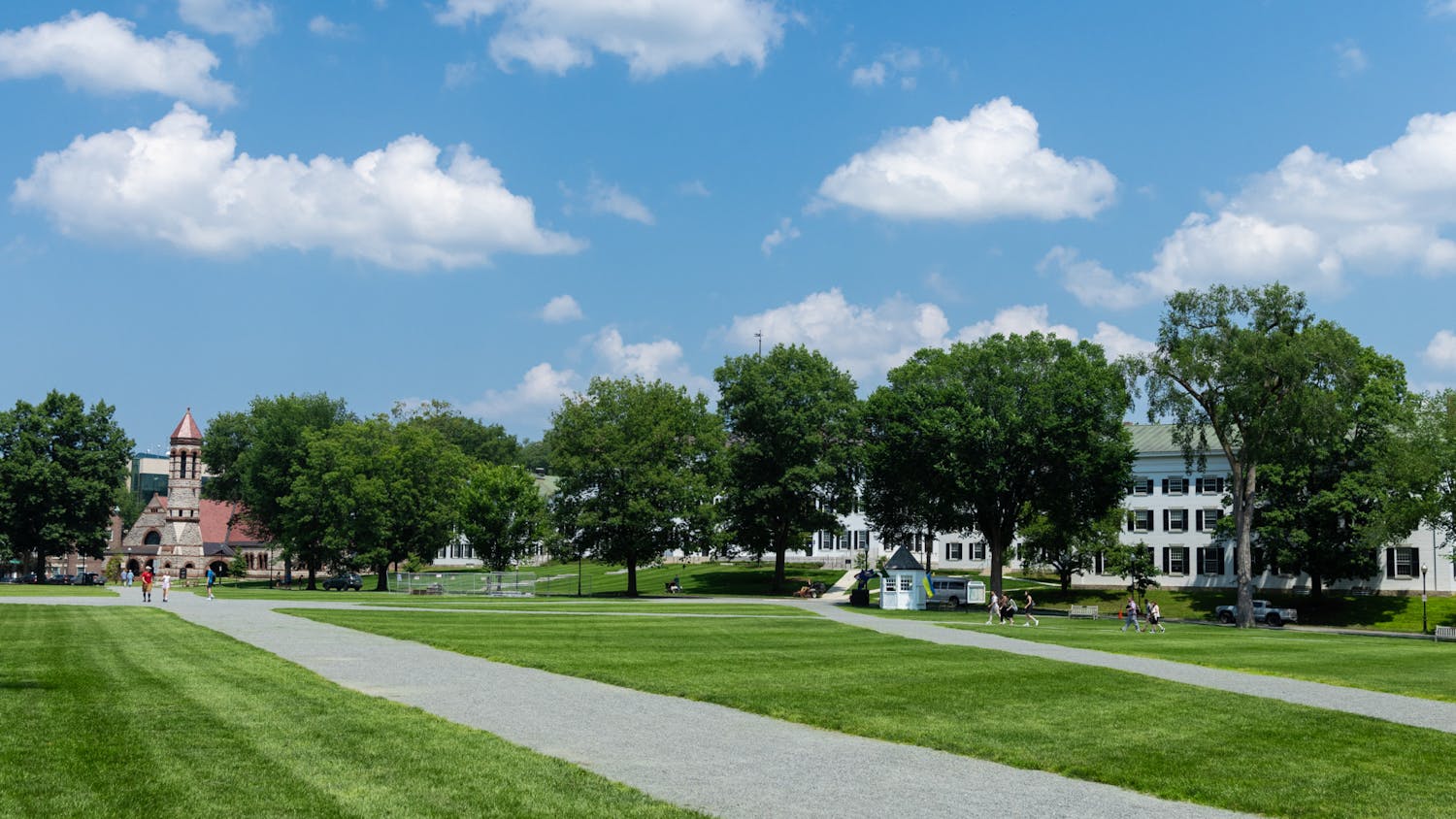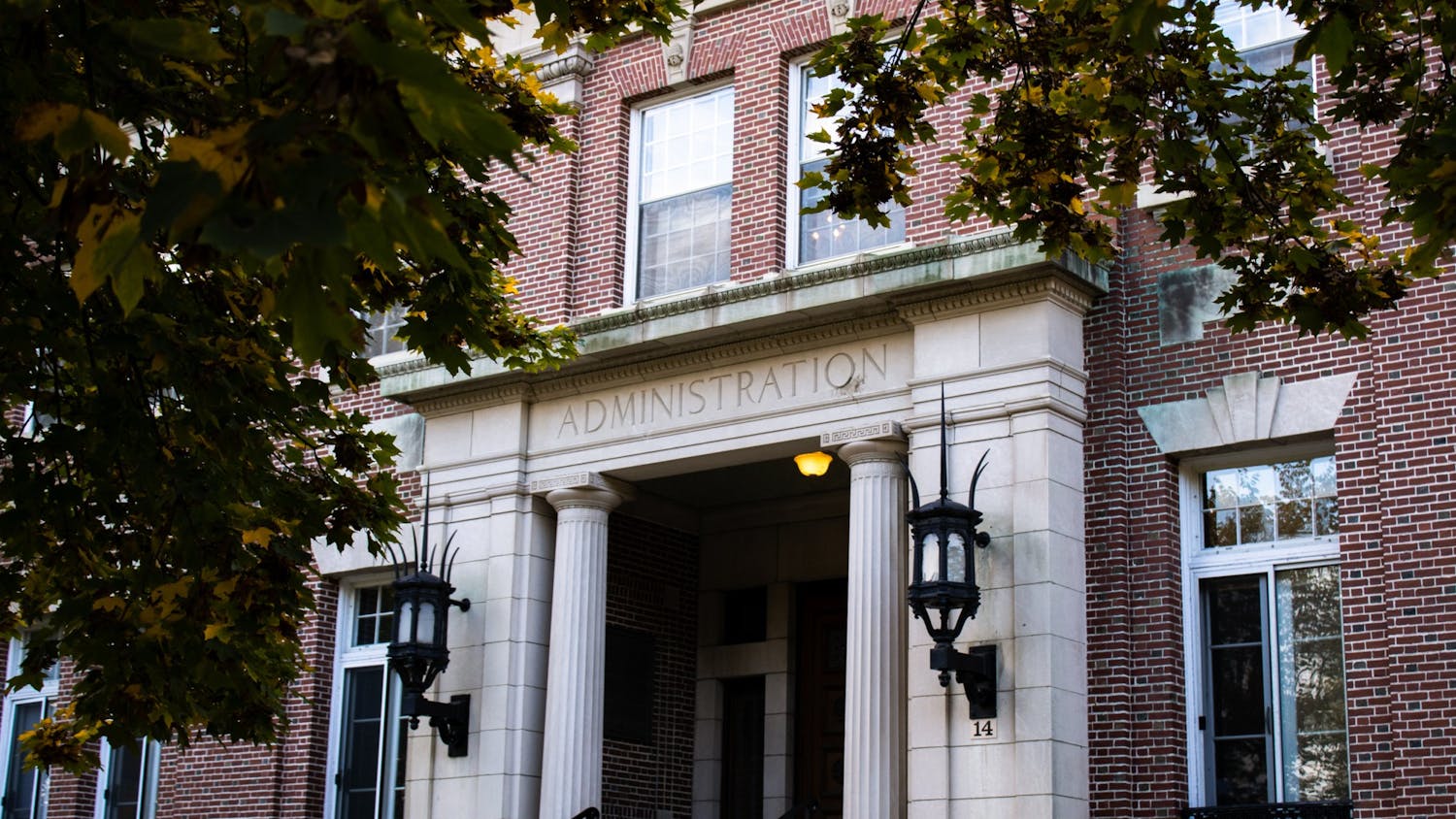On April 29, arts and sciences faculty met at the Hanover Inn Grand Ballroom for a Q&A session regarding the The Future of Arts and Sciences Project. At the meeting — which was open to the public — faculty discussed a proposal to create a School of Arts and Sciences and Dean of Arts and Sciences position.
Conversations about the new school and dean position have been in the works for more than two years, according to Provost David Kotz. The arts and sciences faculty will take an advisory vote on the new model on May 20, after which College President Sian Leah Beilock will decide whether to take the proposal to the Board of Trustees. According to Kotz, the Trustees hold the sole power to vote to create a new school.
While the change in organization would resemble the structure of universities with separate schools — for example, Columbia University, which is organized into 21 Schools — Kotz said an affirmative vote would not lead Dartmouth to change its name to Dartmouth University.
“There’s absolutely no chance that we’re changing our name to ‘Dartmouth University,’ just to be clear,” Kotz said. “The name ‘Dartmouth College’ is here to stay.”
The administrative reorganization would result in a more “seamless” integration between student and faculty ideas, according to Beilock.
“There will be more conversations between what faculty are thinking and what students need,” Beilock said.
The new dean position will also allow for more effective communication and resource allocation for arts and sciences faculty, according to Kotz.
Kotz and economics department chair Nina Pavcnik, co-leaders of the steering committee for the project, said the existing model has several issues. According to Kotz, academic and residential aspects of the undergraduate experience currently operate independently — the Dean of Faculty oversees all undergraduate faculty and reports to the President, while the Dean of the College oversees student life and reports to the Provost. The goal of the project is to grant arts and sciences faculty increased budgetary and operational agency, according to the College website.
“A new School of Arts and Sciences that brings all that together around a focus on the undergraduate experience holistically is what we’re trying to accomplish,” Kotz said.
English professor James Dobson recognized that a new organizational structure would have financial benefits. Currently, faculty in the arts and sciences feel that they lack control over the budget, since income funnels into the central budget and is allocated by senior leadership, Dobson said. According to Dobson, faculty would be able to better advocate for their budgets under the new model, which would give the School of Arts and Sciences its own funding and fundraising capability.
“The proposal gives more autonomy to the arts and sciences,” Dobson said. “The money given to the undergraduate program can stay within their right to educate students.”
Earth sciences professor Carl Renshaw, however, said the increased financial independence of the School of Arts and Sciences may be vulnerable to economic changes.
“With increased responsibility for its own financial management, arts and sciences can potentially be at more risk during the [economic] downturns,” Renshaw said. “They will no longer be buffered by central administration.”
According to Pavcnik, the reorganization would create three divisions within the arts and sciences: the Dean of Faculty, which would focus on more than 40 academic departments, the Dean of Undergraduate Student Affairs, which would focus on student residential and community life and the Dean of Undergraduate Education, which would integrate undergraduate research and advising. All three divisions would report to the Dean of Arts and Sciences.
“I think there will be just more coordination, from the orientation to graduation, in ways that [are] currently not possible,” Pavcnik said.
Kotz added that the new Dean of Arts and Sciences role would allow the College to better support the arts and sciences’ mission to educate students, as stated on the College’s website.
“There’s going to be one person whose full and complete responsibility is to think about the arts and sciences’ mission — from everything that faculty do for teaching and research, all the way to the student support services for undergraduate students,” Kotz said.
Pavcnik added that the Dean of Arts and Sciences’ responsibilities are currently shared between the President and the Provost, who are more “removed” from the day-to-day operations of faculty and students due to institutional responsibilities.
“Given that Dartmouth has grown, it’s important for us to have leadership, in addition to the President and the Provost, that focuses on the arts and sciences,” Pavcnik said.
While Kotz said the admissions process will not be significantly impacted by a change, arts and sciences faculty “will have more of a say” in the admissions process “than they do today.” Currently, admissions is centrally managed and reports directly to the President, while a Dean of Arts and Sciences would have regular conversations with the Dean of Admissions to communicate the School’s interests.
However, Dobson said the change may increase layers of communication and reduce the connection between the President and faculty.
“Every tenure case, [Beilock]’s sitting there looking at faculty tenure cases,” Dobson said. “The Arts and Sciences faculty meeting that happened [on April 29] — the President’s supposed to chair those meetings. Having the President in an intimate relation with our faculty, I think, is something that will be lost from this reconfiguration.”
Dobson added that Dartmouth has a tradition of College Presidents being involved in undergraduate education. For example, former President John Kemeny taught mathematics courses while acting as President, he said, and the President currently remains present in town hall-style faculty meetings. This level of intimacy and direct involvement does not occur at other larger universities and may be at risk under the new organization, Dobson said.
Dobson said he is generally in favor of the proposal, while Renshaw said he remains undecided. Kotz and Pavcnik said they are optimistic the proposal will receive majority support among the faculty in the May 20 vote.
“This project culminates two years of careful planning and collaboration,” Pavcnik said. “We’ve had over 170 meetings with faculty, staff and students to receive feedback. We hope that through collaboration and iteration, we’ve been able to address concerns that people have.”




